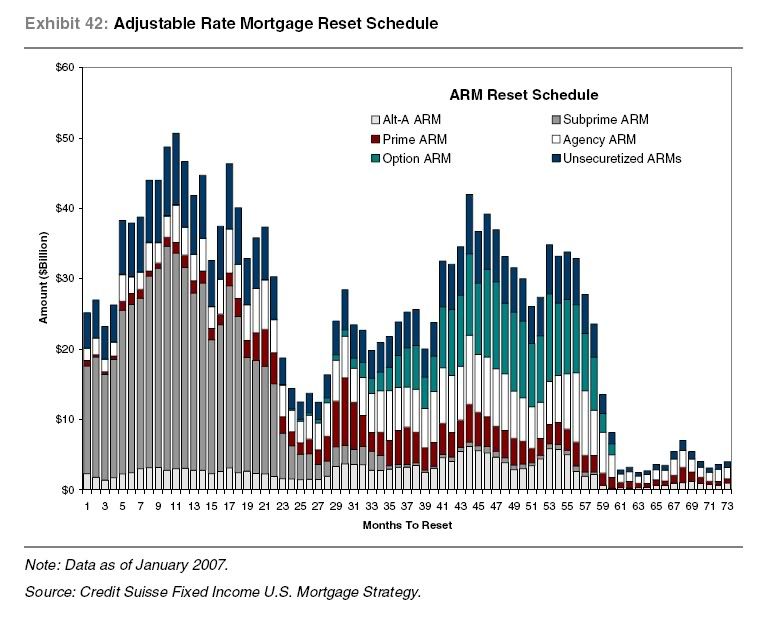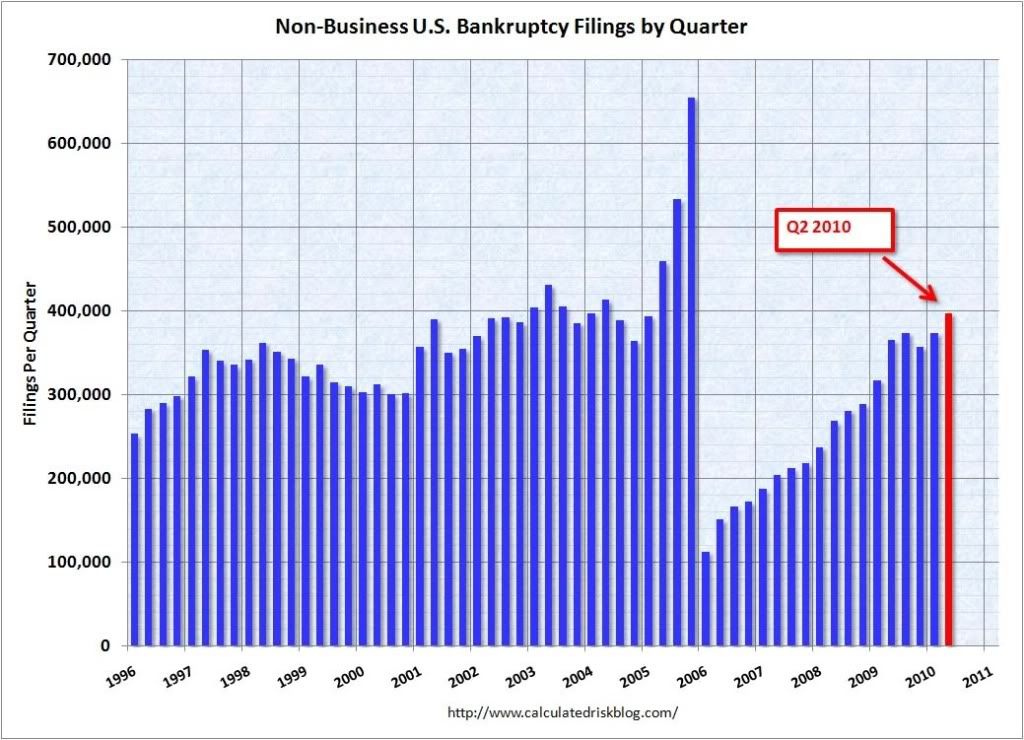Long long ago and far far away on a foreign-flagged vessel outside the territorial limits of US waters, as I was sitting next to William F. Buckley, Jr., sharing a mind-altering substance and observing the behavior of the parents and children around us, I had the profound if alienating insight that "They think they're so different. But they're really just apes."
Sometimes it helps to think of people as just feindishly smart, nimble, and clever chimpanzees -- and worse, chimpanzees who share their clever shortcuts with every other chimpanzee on the savannah. Give them a seemingly insurmountable obstacle and they will nevertheless find some cunning way around it.
Save that thought as we examine latest from RealtyTrac, which released its midyear report this morning.
According to Realty Trac:
a total of 1,961,894 foreclosure filings ... were reported ... in the first six months of 2010, a 5 percent decrease in total properties from the previous six months but an 8 percent increase in total properties from the first six months of 2009. The report also shows that 1.28 percent of all U.S. housing units (one in 78) received at least one foreclosure filing in the first half of the year.In summary, old foreclosures were being completed at a very high rate, while new foreclosures were slowing down.
....
Foreclosure filings were reported on 895,521 U.S. properties during the second quarter, a decrease of nearly 4 percent from the previous quarter and an increase of less than 1 percent from the second quarter of 2009. Default and auction notices were down on a quarter-over-quarter and year-over-year basis in the second quarter, but bank repossessions (REOs) increased 5 percent from the previous quarter and 38 percent from Q2 2009 to 269,962 — a new quarterly high for the report.
“The second quarter was a tale of two trends,” said James J. Saccacio, chief executive officer of RealtyTrac. “The pace of properties entering foreclosure slowed as lenders pre-empted or delayed foreclosure proceedings on delinquent properties with more aggressive short sale and loan modification initiatives. Meanwhile the pace of properties completing the foreclosure process through bank repossession quickened as lenders cleared out a backlog of distressed inventory delayed by foreclosure prevention efforts in 2009.
Readers may recall that three months ago I had a brief debate with another blogger who viewed the March increase in foreclosures over February as the beginning of a new "tsunami." The genesis of this story goes back to this graph and others like it that made the rounds beginning in 2006:

showing that mortgage recasts and resets were coming in two waves: the first in 2007-08, and the second this year and 2011. If foreclosures had followed the pattern of this graph, the YoY rate should have bottomed in about last November (month 35) and have been skyrocketing again since.
As I have previously stated, I always been a little chary of that notion, because, by 2008 and certainly 2009, a lot of those homeowners (who were already probably deeply underwater), let their houses go into foreclosure, or else worked out a refinancing. Thus in my exchange with the other blogger, I countered that the data actually was more consistent with the crest of the foreclosure wave than the beginning of a new one.
Three months later, it looks like we have our answer. Here is the updated chart of year over year changes in foreclsoure activity for the last 15 months:
| Month | YoY % change | actual foreclosures |
|---|---|---|
| 04/2009 | +32 | 342,038 |
| 05/2009 | +18 | 321,480 |
| 06/2009 | +33 | 336,173 |
| 07/2009 | +32 | 360,149 |
| 08/2009 | +18 | 358,471 |
| 09/2009 | +29 | 343,638 |
| 10/2009 | +19 | 332,292 |
| 11/2009 | +22 | 306,627 |
| 12/2009 | +15 | 349,519 |
| 01/2010 | +15 | 315,716 |
| 02/2010 | +6 | 308,524 |
| 03/2010 | +8 | 367,056 |
| 04/2010 | -2 | 333,837 |
| 05/2010 | +1 | 322,920 |
| 06/2010 | -7 | 313,841 |
We are now only two months before the absolute peak of the second set of resets on the graph above. If any new tsunami was going to develop, it certainly ought to be noticeable by then.
Last month I speculated that it is also possible that a second hump in foreclosures, probably a small echo of the first, could occur not because of resets but because of further price declines, now that the $8000 home buyers' credit has ended. It turns out there is a counterargument to that, and the counterargument may already be in evidence, in this graph of Chapter 13 bankruptcies (h/t Calculated Risk):

Citing the NY Post, CR argued:
Underwater homeowners are jumping onto an unexpected financial life raft that lets them escape crippling second mortgage debts and keep their homes -- Chapter 13 bankruptcy.For many borrowers, this makes a Chapter 13 bankruptcy a better choice than a foreclosure. With a foreclosure, the borrower loses the house - and the 2nd lien holder might still pursue the borrower (unless they release the lien for some compensation, like under HAFA).
...
How it works is this: If the home is appraised at less than the value of the first mortgage, the owner can apply for permission in bankruptcy court to reclassify the second mortgage debt. That changes it from a secured debt, which must be repaid, into an unsecured debt, which does not have to be paid in full. The homeowner can then focus on paying off the first mortgage.
With a bankruptcy - under certain circumstances - the borrower keeps the house, and the 2nd lien is converted to unsecured debt and does not have to be paid in full. This is probably part of the reason for sharp increase in bankruptcy filings.
In other words: D#*@ed clever chimpanzees!